Trophallaxis – exchanging social fluids
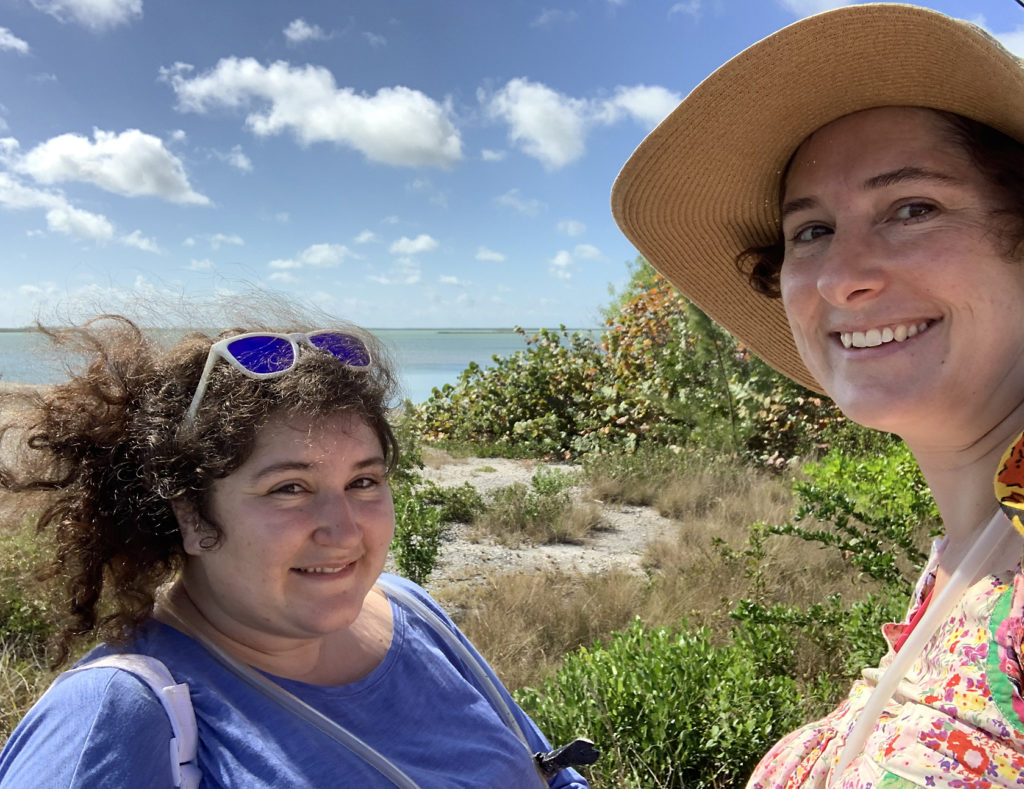
In the review article “Trophallaxis: the functions and evolution of social fluid exchange in ant colonies (Hymenoptera: Formicidae)” published in Myrmecological News, Marie-Pierre Meurville and Adria LeBoeuf, both from the LeBoeuf Lab at the University Fribourg, share a summary on ant trophallaxis (the exchange of social fluids). Importantly, trophallaxis does not only mean exchanging food, but it rather describes a suite of different fluid exchanges among workers. Here, Marie-Pierre highlights the main points.
An Interview compiled by Phil Hönle and Patrick Krapf
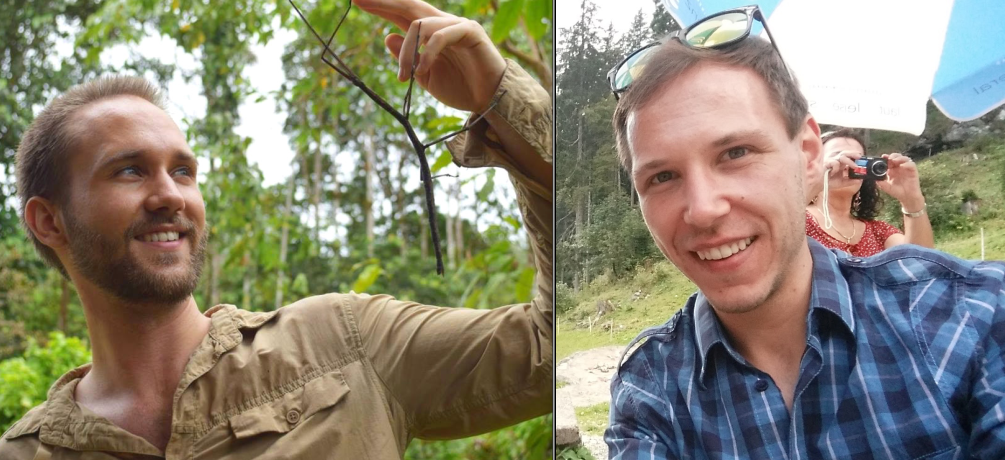
MNB: Could you tell us a bit about yourself?
M-PM: My name is Marie-Pierre Meurville, I am a bioinformatician, and I started my PhD in 2019 in the Laboratory of Social Fluids (University of Fribourg, Switzerland), under the supervision of Adria LeBoeuf, with whom I wrote this review. The lab works on various aspects of social fluids exchanges, mostly in ant colonies. I am particularly interested in investigating the protein content of trophallactic fluid across the ant phylogeny to understand how some forms of trophallaxis evolved in ants.
MNB: Could you briefly outline the research you published in Myrmecol. News in layman’s terms?
M-PM: If you observe ants in nature or on your kitchen counter for a few minutes, there are good chances that you see some of them “kissing”. Behind these “kisses” lies a powerful behaviour, trophallaxis, during which ants regurgitate fluid from their digestive system to another individual in a mouth-to-mouth interaction (that looks like a kiss). But trophallaxis has historically not been restricted to this behaviour, and in our review, we define it more clearly than it has been defined before, as a behaviour that involves the direct ingestion by one individual of material excreted, secreted, or regurgitated by another. This includes behaviours historically called trophallaxis (like anus-to-mouth fluid transfer) and behaviours that had not previously been considered trophallaxis but fit the definition (like some forms of larval hemolymph feeding). We identified at least seven types of trophallaxis involving various actors (adults, broods, ants only, or ants and other species) and regurgitative, excretory, or secretory parts (mouth, anus, other excretory or secretory organs). We also clarified the terminology for these various behaviours, and tried to report all species of ants reported to engage in any form of trophallaxis across the scientific literature for a better overview of the prevalence of these behaviours. It was a lot of work!
With such a variety of behaviours, it seemed important to understand how ant physiology and morphology allow such exchanges, the role trophallaxis behaviours play in ant colonies and what might have led to the evolution of these behaviours. We highlight that trophallaxis allows ants to share more than food across the colony and that these behaviours are shown or suspected to facilitate ant communication in many contexts. For example, it could be a way to manipulate larval growth and development, it plays a role in the collective memory of a colony, allows ants to appease an aggressor, and is used to sense the satiety state of a colony. These behaviours are crucial for ants that perform them.
The evolution of trophallaxis remains a bit cryptic. In our hunt for reports of trophallaxis in the literature, we found 267 species that were reported to engage or not engage in trophallaxis. These species cover 104 genera, but that leaves vast regions of the ant phylogeny unexplored, and this information is critical in our understanding of trophallaxis evolution. Of those 267 species, there is a massive bias toward species that engage in trophallaxis. Why? As most researchers well know, it is both difficult to publish negative results and difficult to prove conclusively that a behaviour is not performed.
From our report of species engaging in trophallaxis, it seems obvious that at least some forms of trophallaxis evolved or were lost several times in ants, as in the most derived subfamily Myrmicinae, many species engage in trophallaxis, but many others don’t. We talk about four hypotheses for the evolution of the most observed form of trophallaxis, mouth-to-mouth regurgitation aka stomodeal trophallaxis. People have suggested that it evolved as an answer to aggressive behaviour, where victims regurgitate a drop of food to their aggressor. It could also have evolved from parental care, with adult ants first feeding their immobile larvae through trophallaxis, then extending it to the whole colony to include adults, other species, and even other kingdoms. It is also thought that trophallaxis may have evolved with increased sociality to keep big and complex colonies well-integrated and to facilitate their organization. Finally, trophallaxis might have appeared with the integration of liquid food in ants’ diet to safely transport to and efficiently share nutrients with every member of a colony. These four hypotheses are not mutually exclusive, and more work is needed to have a clearer idea of the evolution of trophallaxis. We are currently working on a quantitative machine-learning based analysis of these data, so stay tuned!
MNB: What is the take-home message of your work?
M-PM: Trophallaxis behaviours are complex, multi-faceted, and are critical in the colony life of approximately half of all ant species. We estimated that the word “trophallaxis” describes at least seven types of fluid exchange in ants. However, in scientific literature, “trophallaxis” is often used to refer only to stomodeal trophallaxis, a regurgitation of the crop content of an individual through a mouth-to-mouth interaction. These different forms of trophallaxis are certainly important at different times and locations within and outside of the nest. This means that these behaviours are important in different contexts, serving different functions ranging from parental care to decision making. It seems clear that trophallaxis behaviours are not only a way of sharing food, but is also an efficient way to organize the colony and communicate, thus to make decisions at the colony level. Our review highlights this complexity and multiplicity of forms, functions, and contexts of trophallaxis in ants.
When having a look at the trophallaxis forms reported over the ant phylogeny, one can see that trophallaxis behaviours seem to have evolved or been lost several times in ants. To us, the most convincing hypothesis explaining the evolution of stomodeal trophallaxis behaviour in ants is the addition of sugary liquids to the diet (by co-opting plant carbohydrates either directly or indirectly) and the need to safely transport and share these liquids.
MNB: What was your motivation for this study?
M-PM: When I started to write this review I was a PhD student completely new to the ant world, and I was planning to work on trophallaxis: I needed to learn everything possible on trophallaxis. Diving into literature, I realized that no review existed on this topic and that new techniques allowed scientists to study new aspects of trophallaxis, such as the protein content of the fluid exchanged or the analysis of the network created by these exchanges. My supervisor, Adria LeBoeuf, gave me the great opportunity to write this review in an attempt to collect our current knowledge on all forms of trophallaxis in order to get a better overview on the roles of these behaviours and their importance to ant biology. One goal is to draw scientists’ attention to these crucial behaviours to help reveal more of their implications in colony life. My hope is that reading this review, scientists could learn new aspects of trophallaxis which could help them to answer questions about their current work or give them ideas or new directions to follow.
MNB: What was the biggest obstacle you had to overcome in this project?
M-PM: As I mentioned, trophallaxis is a complex behaviour implicated in various aspects of ant life. For this reason, defining trophallaxis was not an easy task due to the huge difference between the different behaviors. We had to be strict about what is trophallaxis and what is not, and it was not such an easy task. We even identified behaviors, which need more investigations in order for us to know if they can be called a form of trophallaxis or not. I must also say that many trophallaxis behaviours are rarely observed and consequently poorly studied. The prevalence of stomodeal trophallaxis (mouth-to-mouth regurgitation) complicated the investigation of other forms of trophallaxis. For example, the mechanics of certain forms of trophallaxis remain largely unresolved (almost anything relating to larvae!). Finally, hunting for reports of the presence or absence of trophallaxis at the species level was very time and energy-consuming because, to our knowledge, it has never been done thoroughly, and the data is very sparse. Also, some forms of trophallaxis have various names in older papers, which made the search very complicated. I did an extensive literature search that involved hunting for very old papers written in various languages, which were often not easy to access. On the plus side, this task allowed me to learn about very cool ant behaviours. It is also worth noting that it is very hard to report the absence of a behaviour, though in the context of trophallaxis and the study of its evolution, this information is precious, and it is a joy to me when I discover a new negative report. Please report it!
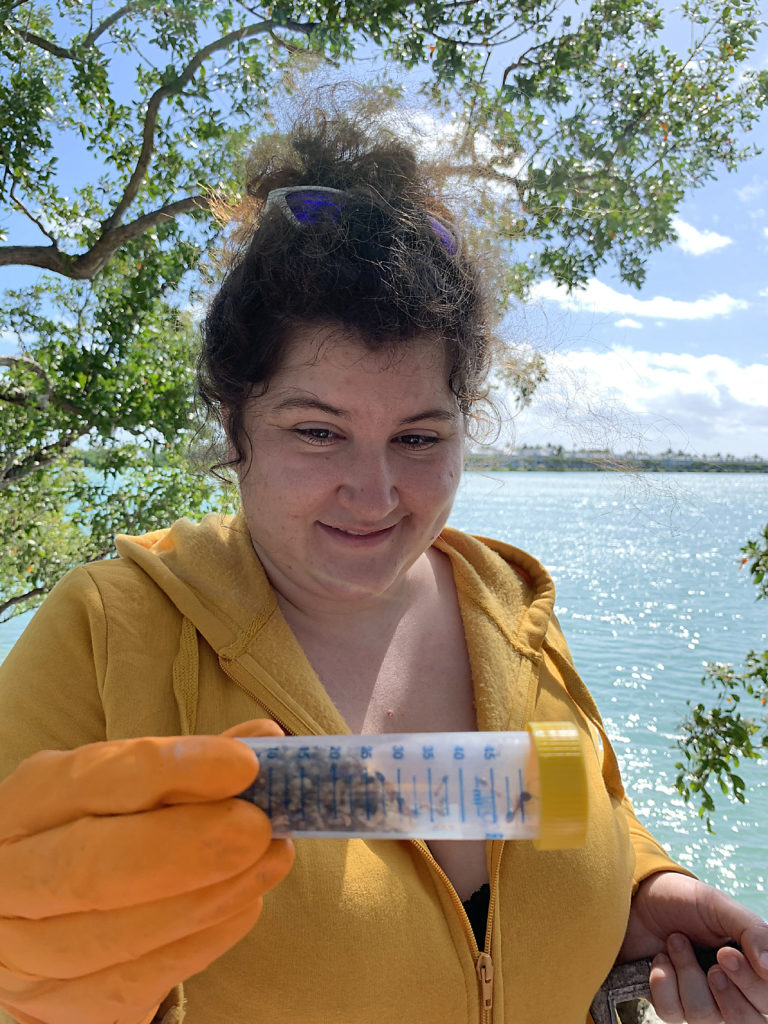
MNB: Do you have any tips for others who are interested in doing related research?
M-PM: I think it is very important when working in fields related to trophallaxis, to be clear about which form of trophallaxis is observed and not to assume that trophallaxis happens in a given species, but to test it with colored liquids and dissection. Indeed, it was thought for a long time that primitive Ponerine ants are not able to engage in stomodeal trophallaxis. While this seems to be true for many of these species, several ponerines have actually been observed to perform stomodeal trophallaxis. It is not straightforward to assume which species perform trophallaxis just with the phylogeny, and so it is worth validating the presence or absence of such an important behaviour in a species, as this information could be a game-changer in one’s research.
MNB: Where do you see the future for this particular field of ant research?
M-PM: It is a complex behaviour and there is still a lot to discover about it. The rise of machine-learning and -omics techniques are real opportunities. With -omics techniques, we can now explore the content of the fluid exchanged, and machine-learning can help modeling a colony to understand the dynamics of the trophallaxis network, for example. I think that more research on trophallaxis behaviours will keep revealing how crucial these behaviours are for the ants who perform them and could help scientists understand aspects of ants’ societies that remain mysterious.
At another level, trophallaxis is a way to organize a non-hierarchical society, and from our review, it is suggested that it helps making various decisions. It could thus be interesting to study it in relation to human hierarchical societies and their own voting systems, maybe to optimize the way we make decisions. Additionally, trophallaxis is such an efficient way of making decisions and sharing data that it has started to be used in robotics for swarm robots, a path that could be exploited more in the future.
MNB: Thank you for this interesting interview!
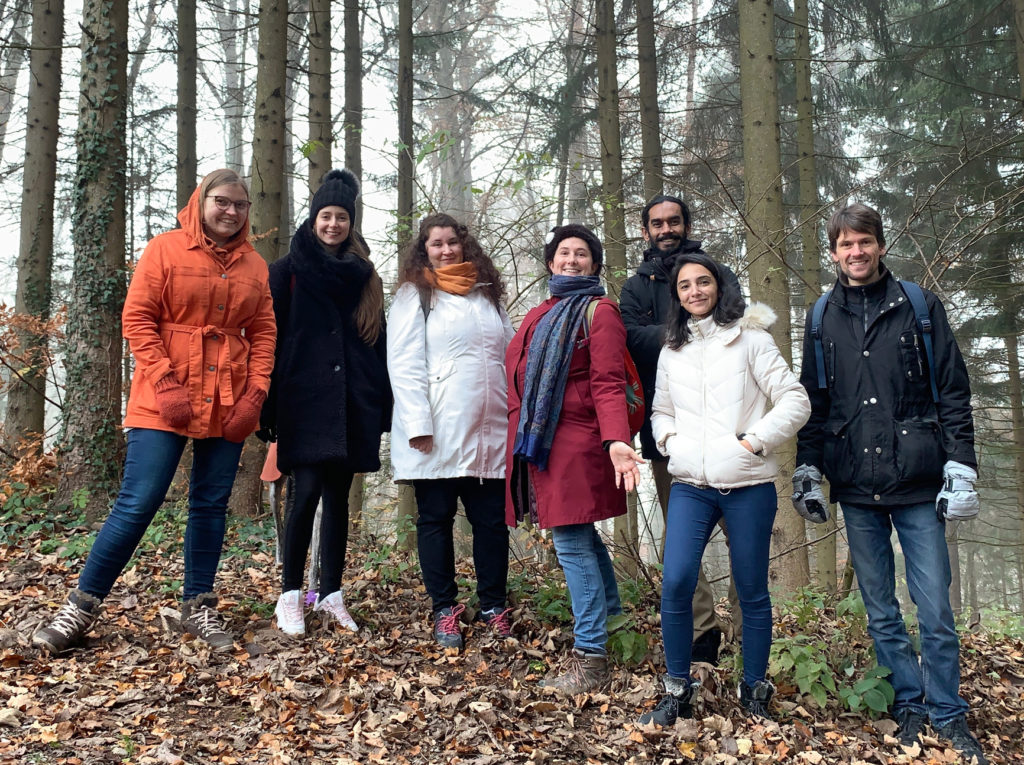

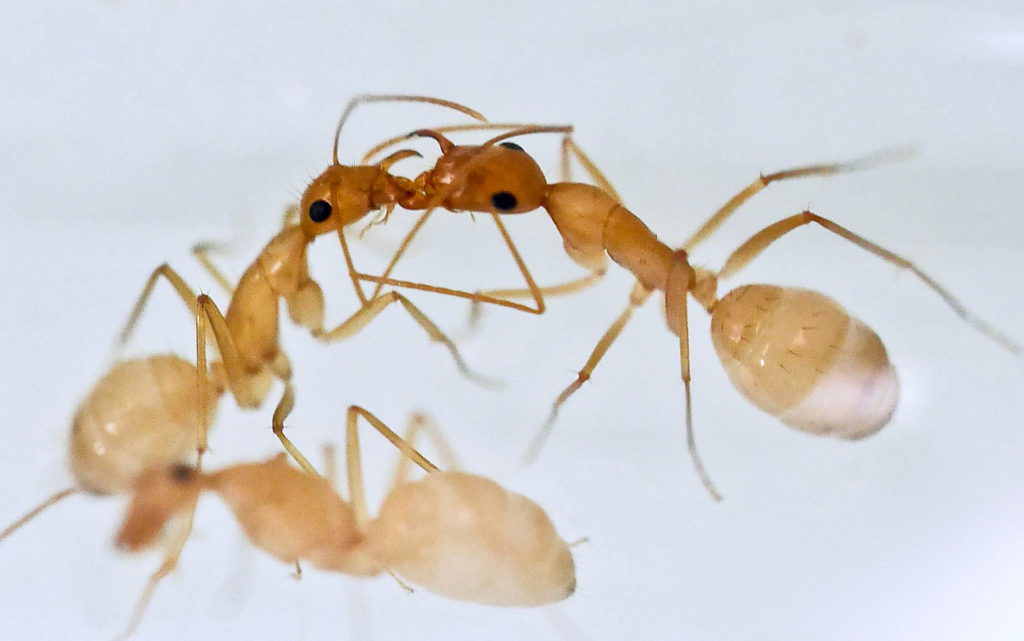


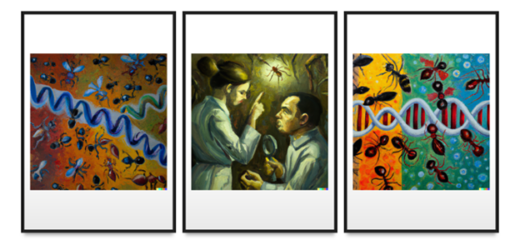
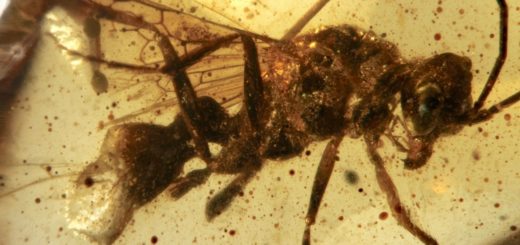
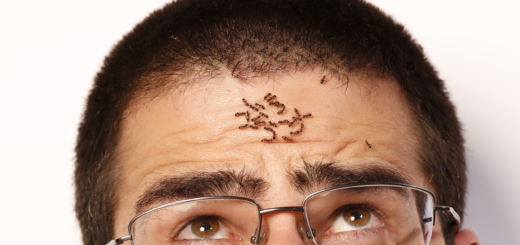
“For example, Oecophylla smaragdina (Formicinae) drinks sap from wounds in Cardwellia sublimis and Syzygium sayeri (Blüthgen & Fiedler 2004)”
the plant “Syzygium sayeri” did not appear in Blüthgen & Fiedler 2004 https://esajournals.onlinelibrary.wiley.com/doi/full/10.1890/03-0430 !!!!!!
A very great review!!! Love it…